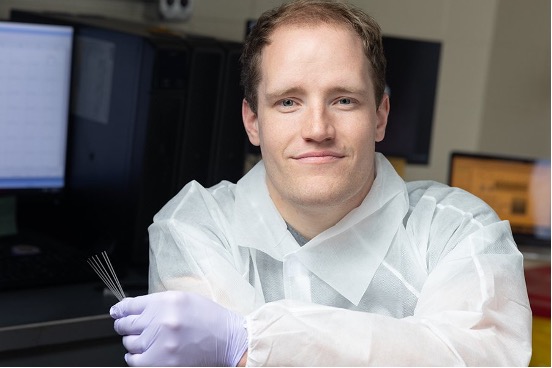New Visual Diagnostic Technique to Advance Early Detection of Neurodegenerative Diseases
August 9, 2024
Source: drugdu
 264
264
 Parkinson's disease is identified by the buildup of misfolded alpha-synuclein proteins, which are crucial to the function of neural cells in the brain. This condition impacts millions globally, creating substantial hurdles in both early detection and treatment. Typically, Parkinson’s is diagnosed in later stages through clinical observation of physical symptoms, which often delays the application of potential treatments. Early diagnosis currently depends on sophisticated, costly equipment that is not widely accessible, particularly in less developed regions. Researchers have now introduced a novel visual diagnostic approach aimed at improving early detection capabilities for neurodegenerative diseases like Parkinson's.
Parkinson's disease is identified by the buildup of misfolded alpha-synuclein proteins, which are crucial to the function of neural cells in the brain. This condition impacts millions globally, creating substantial hurdles in both early detection and treatment. Typically, Parkinson’s is diagnosed in later stages through clinical observation of physical symptoms, which often delays the application of potential treatments. Early diagnosis currently depends on sophisticated, costly equipment that is not widely accessible, particularly in less developed regions. Researchers have now introduced a novel visual diagnostic approach aimed at improving early detection capabilities for neurodegenerative diseases like Parkinson's.
Named Cap-QuIC (Capillary-enhanced Quaking-Induced Conversion), the techniques developed by researchers at the University of Minnesota (Minneapolis, MN, USA), allows clinicians to visually identify infected samples, enhancing both the affordability and accessibility of testing. Building on their earlier diagnostic advancements, Cap-QuIC employs a simple technique to visually detect misfolded alpha-synuclein proteins. In their research published in npj Biosensing, a peer-reviewed scientific journal from Nature, the team utilized glass capillaries—tiny tubes designed for biological samples—to differentiate between normal and abnormal proteins by observing how liquids behave within these tubes. The effectiveness of Cap-QuIC was validated through testing on tissue samples from white-tailed deer affected by Chronic Wasting Disease, where it demonstrated high levels of sensitivity and specificity in distinguishing diseased samples.
"Our Cap-QuIC procedure represents a major advancement in point-of-care neurodegenerative disease diagnostics," said Professor Sang-Hyun Oh, a McKnight Professor and Bordeau Chair in the College of Science and Engineering’s Department of Electrical and Computer Engineering and senior co-author of the paper. "By simplifying the detection process, we can potentially diagnose Parkinson's disease earlier, which is crucial for effective management and treatment."
Source:
https://www.labmedica.com/pathology/articles/294802103/new-visual-diagnostic-technique-to-advance-early-detection-of-neurodegenerative-diseases.html
Read more on
- Subsidiary Signs Exclusive Licensing Agreement for GenSci098 Injection Project December 17, 2025
- Kangfeng Biotechnology’s Anti-Gastroesophageal Reflux System Receives Approval from the Drug Administration December 17, 2025
- Cell Metabolism | Efficacy of Akkermansia muciniphila Supplementation in Overweight/Obese Patients with Type 2 Diabetes December 17, 2025
- Major Breakthrough! China’s First Injectable Silk Fibroin Gel Enters Clinical Trials December 17, 2025
- Can AOC become the “next stop” for oligonucleotide therapy? December 17, 2025
your submission has already been received.
OK
Subscribe
Please enter a valid Email address!
Submit
The most relevant industry news & insight will be sent to you every two weeks.



